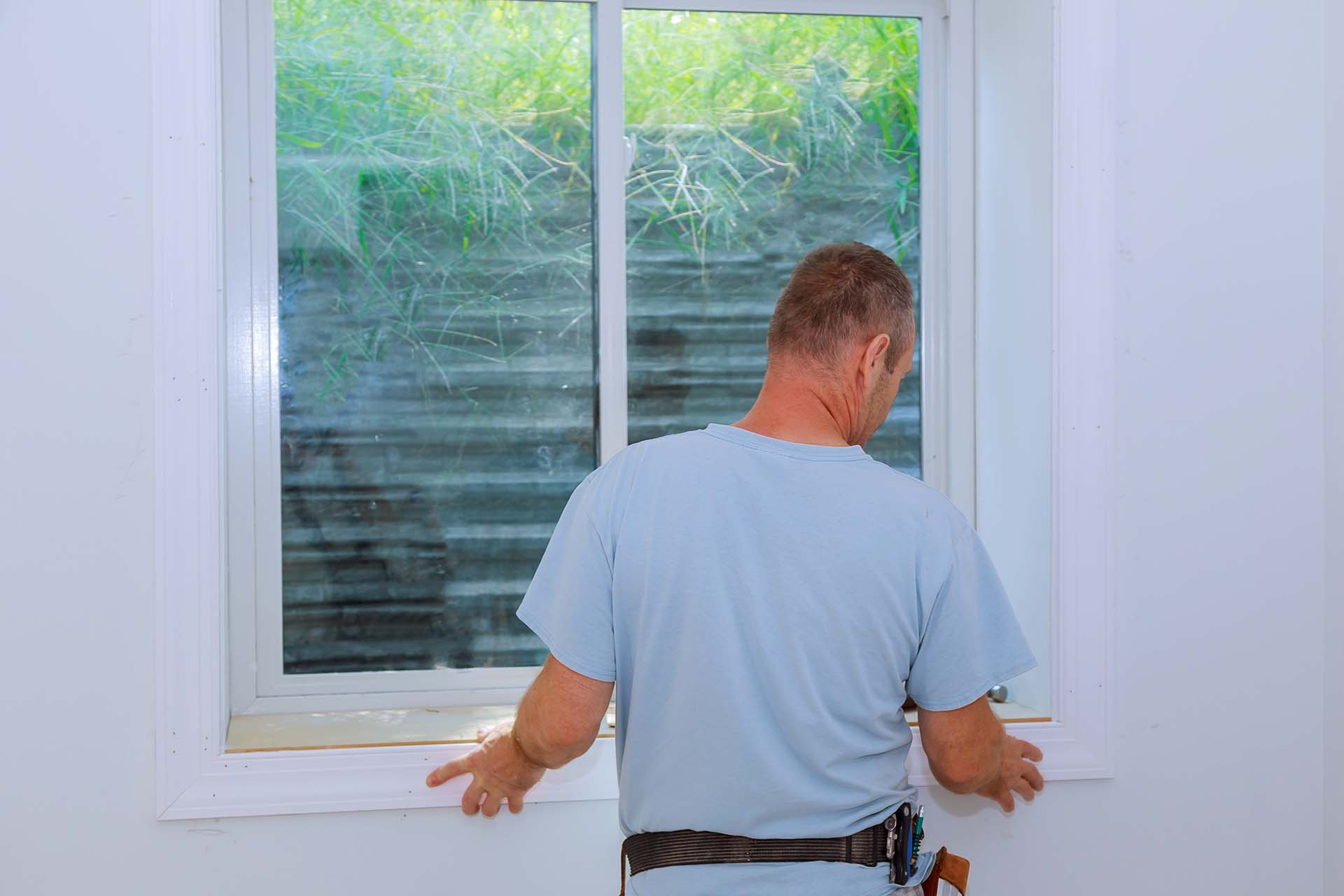Window trim is a crucial element of a home’s visual appeal, just like your windows and siding. The window trimming of your home will give your window frames a finishing touch, while also creating a seamless transition from the window to the interior and exterior walls of your home. Furthermore, window trims improve the structural integrity of your home. For example, these home additions can help shield the wall from moisture damage. Homeowners frequently wonder whether they may replace their window trim when it comes to changing windows. With that being said, the information down below will help answer this frequently asked question, and will provide more general information about window trims.
Is it Possible?
On the one hand, changing the window trim while replacing windows is undoubtedly an option and one that is frequently picked by homeowners. Replacing both your windows and your window trims at the same time might be a chance for you and your family to modernise the appearance of the property, while enhancing the trim’s usability. For example, if the existing trim is decaying or peeling, replacing it with a new one may enhance the home’s overall beauty and shield the wall from further harm from extreme weather conditions and such. Additionally, updating the window trim can provide room for additional additions like weather stripping, which can raise the home’s energy efficiency. On the other hand, the procedure of altering the window trim is not simple, though, especially if you are doing at the same time as replacing your windows. To guarantee that the new trim fits correctly, creates a seamless transition between the window and wall and matches your window design and colour, meticulous planning and a certain level of competence are needed. In other circumstances, the new trim could be bigger or thicker than the previous one, necessitating alterations to the wall or window frame. In older homes where the windows and walls are not straight and may have settled over time, this may be especially difficult. With that being said, it is best that you hire a professional to get the job done, as they have the right expertise and tools to do all of it properly.
Considerations to Keep In Mind
When it comes to changing your window trims, there are aesthetic concerns to bear in mind in addition to the utilitarian ones. For example, the new trim must blend in with the home’s general design and aesthetic. For the benefit of the looks of your home, it is best that your new window trim doesn’t contrast with other architectural elements like door frames or mouldings. This can be especially difficult in older homes where the trim may have been a key component of the original design. When this happens, it could be required to collaborate with a preservationist or a historical institution to make sure the new trim is acceptable and complies with the requirements. Cost is another factor that should also be taken into account. When the homeowner performs the job himself, replacing the window trim may be a rather affordable project. However, the price might easily rise if the trim is complicated or needs bespoke work. Moreover, doing this kind of project yourself can potentially increase the probability of something going wrong with your replacement window trims or your windows themselves in the future. That is why it is important to hire a professional to complete this project. Although they can charge more for the extra work required to change the trim, it will all be worth it, as you are guaranteeing that your window trimmings are properly replaced, while also being covered.
Types of Window Trims
Casing Trim
A type of window trim called a casing window trim is often constructed of wood and since this trim has so many advantages, it is the most conventional kind of window trim and is frequently used in both traditional and modern homes. First of all, casing trim gives the window a neat and polished appearance that can enhance the room’s overall visual appeal. This is crucial in situations where windows are visible from the outside, including windows that face the street, where a well-finished window may improve the home’s overall curb appeal. Second, casing trim can aid in preventing moisture damage to the wall. Water and moisture frequently penetrate via the space between the window frame and the wall, which over time can harm the wall and other components of your home. Casing trim closes this space, acting as a barrier to stop moisture from penetrating and harming the wall. Furthermore, installing and maintaining casing trim is not too difficult. Homeowners may simply alter the appearance of their windows to suit their own tastes and styles by painting or staining them to match the colour of the window frame or the wall. Additionally, wood is frequently used to make casing trim since it is strong enough to survive everyday usage and offer a long-lasting solution. And last, casing trim is a reasonably priced way to enhance the appearance and performance of windows. Casing trim is often less expensive than other kinds of window trim and is simple for a homeowner or contractor to install. This makes it the perfect option for homeowners seeking a quick and low-cost approach to improve the appearance of their windows and safeguard their walls from moisture damage.
Crown Molding
A sort of decorative trim called crown moulding is utilised to give a room, as well as the exterior side of your home, a sense of class and refinement. It usually runs parallel to the ceiling of a room and is positioned along the top of the window frame to create a smooth transition between the two surfaces. When it is placed on the outside, it is usually placed along the top of a window frame. Crown moulding is available in a number of designs and profiles and may be produced from a variety of materials, including wood, polyurethane, or MDF. As a result, it can be used to complement a variety of architectural types and design preferences. There are several advantages to employing crown moulding. First off, by giving a space a feeling of height and grandeur, crown moulding may improve a home’s interior and exterior visual appeal. It works especially well in homes with high ceilings because the moulding may attract the eye upward, giving the room a feeling of elegance and space. Moreover, using crown moulding to add architectural interest to a space is a great idea. The architectural style of the room, whether it be conventional, classical, or contemporary, may be determined by the moulding. Due to the variety of available shapes and profiles, homeowners may select a moulding that precisely matches the style of their home. Crown moulding can also aid in concealing any flaws or gaps at the top of the window frame. This is especially helpful for windows that are installed in large wall voids since the moulding may provide surfaces that are not readily apparent a neat and polished appearance.
Rosette Style Window Trim
A decorative architectural element that accentuates the beauty and refinement of a building’s interior or exterior design is referred to as rosette style window trim. This kind of window trim is distinguished by its elaborate craftsmanship and circular or floral-like form. It has been utilised in many architectural styles for millennia and often serves both utilitarian and aesthetic reasons. A rosette type window trim is known for its elaborate design, which frequently incorporates delicate patterns, scalloped edges, and exquisite scrollwork. These trimmings are frequently crafted from fine materials like solid wood, stone, or cast iron and are intended to enhance the building’s overall beauty. While some rosette window trimmings have exquisite carvings, others are simply painted or have elaborate stains or varnishes applied to them. The adaptability of rosette-style window trimmings is another important quality. They may be adapted to the particular requirements of the structure and utilised in a range of architectural styles, including traditional, classic, and modern. These trimmings can also be utilised to draw attention to particular features of the structure, such as a bay window or a skylight. The use of window trim with a rosette design has a number of advantages. They first give a decorative element to a building’s interior or exterior, providing it personality and charm. In addition, they provide the practical role of concealing the gap between the window frame and the wall and shielding the structure from weather and water damage. Additionally, by reducing air leakage and enhancing insulation, rosette window trimmings can contribute to a building’s improved energy efficiency.
The window trimming of your home is very important, as it provides both aesthetic and functional benefits. You can upgrade this part of your home while you are replacing your windows, but it is best that you do it with professional help. Although you may do it on your own, for this project, it would be safer, less time-consuming and more rewarding in terms of quality and cost, to do it with someone who has the expertise and tools to get the job done. If you are planning to change your trimming, some types that you should consider trying out include casing trimming, crown molding and rosette style window trimming. If you have further questions about window trims, talk to your local, trusted window contractor today.

